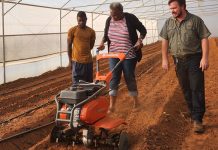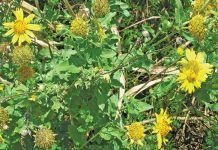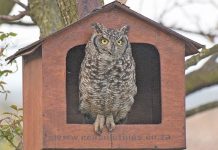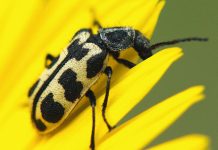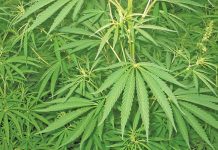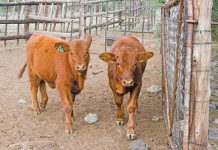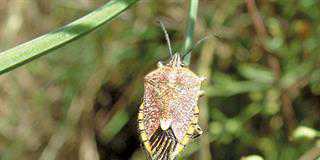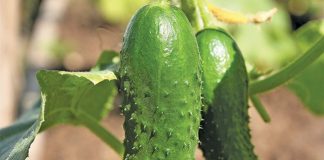Biological pest control is by far the better option for avocado pests, as the incorrect use of agrochemicals on avocado trees could see minor pests develop into major economic risks.
Fruit flies
Ceratitis rosa, also known as the Natal fruit fly, attacks both young and older fruit. It lays its eggs just under the skin surface. When the fruit is about golf-ball size, a lesion appears as a puncture mark surrounded by a white powdery substance (exudate).
As the fruit develops, star-shaped cracks occur in the skin. When the skin around the lesion is removed with a pocket knife, the underlying tissue will appear bruised.
Unfortunately, the few natural enemies of this pest cannot control the problem effectively on their own.
C. rosa also infests other host plants, such as bramble and wild-growing guavas, growing in the bush surrounding avocado orchards. These plants should therefore be eradicated in a zone of 200m or more around the orchards. Cut them down to 200mm above the ground, and apply a suitable herbicide as soon as the plants have regrown to about 0,5m.
If damage exceeds 5%, consider using poisoned bait to lure the flies. But bear in mind that these chemicals will harm the parasitoid-predator balance in the orchards.
Heart-shaped scale
Protopulvinaria pyriformis grows to about 3mm and is reddish-brown. The young scales, known as crawlers, infest the leaves. The summer generation lasts five months, the winter generation seven months. Crawlers are produced mainly in November and April.
The fruit is never attacked, but the scales secrete considerable amounts of honeydew. This lands on the leaves, branches and fruit, forming a medium for sooty mould, which causes a black discolouration of the plant and fruit and interferes with photosynthesis.
Certain wasps, ladybirds and lacewing and fly larvae species (Cecidomyiidae) play an important role in the control of scale, and chemical control is usually unnecessary.
Phytophthora root rot
Caused by Phytophthora cinnamomi, this occurs worldwide. Locally, it is one of the most important avocado diseases
and is found in all production areas. The severity of infection varies, but potential losses are very high if no control measures are taken.
The tree assumes a bare appearance. The leaves are smaller and paler; they then turn yellow, wilt and drop off. Tree growth is retarded and the fruit tends to remain small, showing symptoms of sunburn due to lack of shading.
Infected feeder roots turn black and become brittle as they die off. Where the disease is severe, the feeder-root system may be almost entirely destroyed. The tree dies from water stress.
Dispersal of the pathogen requires free-moving water, so avoid planting avocados in soil that is prone to waterlogging. The fungus has a wide host range, including papaya, macadamia and various ornamental species. If possible, avoid planting avocados on lands previously used for alternate hosts.
Irrigation should not leave water standing on the soil surface, particularly around the trunks. For this reason, use sprinklers and microjets rather than flood irrigation.
Stem canker
Another form of Phytophthora infection, stem canker may be caused by P. citricola, P. cactorum or P. cinnamomi. Symptoms include discoloured bark close to the ground. Infected trees normally die away slowly, but may die off suddenly.
Do not injure the stems near ground level and avoid constantly wetting the stem. Where lesions occur, remove dead tissue and cover with a bituminous sealant.
Anthracnose
This is a pre- and a post-harvest problem, and can cause serious losses. The most important symptom is fruit spotting. The lesions, which are brown, may enlarge, coalesce and eventually cover large areas of the fruit surface. The pulp beneath the lesions becomes soft and discoloured, rendering the fruit inedible.
Where leaves are infected, a brown necrotic (dead) band spreads inward from the margin; in severe cases, it may spread through the petiole into the branch. Branches then show brown or purple lesions and may die off.
A registered post-harvest dip is available specifically for anthracnose control. It should be applied to the fruit in the packhouse.
Cercospora spot
This fruit-spotting disease is caused by the fungus Pseudocercospora purpurea. Initially, irregular brown fruit lesions develop. These dry out and crack, creating entry points for secondary pathogens.
Several chemicals are registered for use against this disease. They are equally effective against anthracnose.
Source: Directorate Communication, national department of agriculture in co-operation with the ARC-Institute for Tropical and Subtropical Crops.

